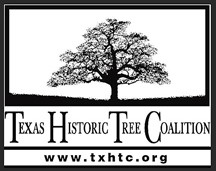Saving the Quadri/Quin Centennial Bur Oak in Plano, Texas



Originally Published November 22, 2021 By STEVE HOUSER (Edited August 2022)
The Plano Quadri/Quincentennial Bur Oak is believed to be the oldest living tree found in North Texas. Located in the southeast section of Plano’s Bob Woodruff Park, the tree is accessible to the public. The Bur Oak tree is approximately 90 feet tall, 213 inches in circumference, and has a crown spread of 103 feet. For comparison, according to the Texas Forest Service Big Tree Registry, the Texas State Champion Bur Oak (the largest known Bur Oak in Texas) is in Tarrant County and it is 81 feet tall, 218 inches in circumference, and has a crown spread of 105 feet for a point total (or index) of 325.
Prior to the land becoming a city park, previous owners included the Dr. Daniel Rowlett Family, the Colonel Landon W. Oglesby Family, the William T. Land Family, William D. Prince, and the Claude C. Albritton Family. The Land Family used the timber on the property for their west Plano farm, but somehow the Bur Oak tree was spared.
Ownership of the site passed through many hands over time. Several of these families helped to build and develop Plano and North Texas. Among them is The Rowlett Family, for whom Rowlett Creek and the city of Rowlett are named for, and William Sachse, for whom the town of Sachse is named for. The Colonel Landon W. Oglesby Family owned a general store in downtown Plano.
Trees have always played an important role in this area. Early settlers often chose their locations with water and timber in mind; therefore, many people settled along Rowlett Creek. One of the previous property owners, William Prince, also loved trees and was the first in the area to hand graft paper shell Pecan buds onto the native Pecan trees, grafting over 1,000 Pecan trees along with his son, Dexter. For many years, people would come to the William Prince property to gather pecans and thousands of pounds of paper shell pecans were harvested. People still enjoy coming to Bob Woodruff Park in the fall to gather pecans.
Bur Oak trees, in general, are found in lower lying areas and the wood is heavy, hard, impermeable, and durable. The trees are very hardy, tolerating drought, as well as city pollution. Thick corky bark enables these trees to withstand fire and other damage better than most Oak trees. They provide deep shade, and, in the winter, the corky twigs and stout branches give them a picturesque appearance. They produce large acorns
which are sought after by wildlife.
After some research, this Plano Bur Oak was designated as the Bicentennial Tree in 1987 and was recognized as having lived here at the time of the signing of the U.S. Constitution. A plaque was installed
near the base at the time. In 2000, tree pruning was donated free of charge, and a fertilization program was
started for the tree that was donated until 2015.
The citizens of Plano celebrated the life of this magnificent tree and recognized the history of the land surrounding it at Plano’s 2002 Arbor Day Celebration. It was registered with the Dallas Historic Tree Coalition (now the Texas Historic Tree Coalition) at the time of the celebration. The celebration included speeches by
officials, a kid’s climbing event, and bark rubbing station. To the best of our knowledge, the kids climbing event was the first one ever held in the state. At that time, tree pruning was donated again, and a lightning protection system was installed. The city provided the lightning system materials, and the lightning system
installation was donated.
Originally, the tree was estimated to be 243 years old, but in 2006 strong winds took down two large limbs growing around forty-five feet from the ground. The limbs were used to estimate the tree’s age more accurately. A 24-inch diameter limb was found to be 226 years old, leading to the conclusion the tree was quite likely to be over 400 years old and possibly over 500 years old. As a result, the name was changed from the Bicentennial Bur Oak to the Quadricentennial or Quincentennial Bur Oak.
During a 2012 Arbor Day celebration, the plaque was replaced as part of a rededication ceremony.
The plaque needed to be updated to indicate the age of the tree more accurately, which led to an inspection of the tree in late September of 2021. Unfortunately, three cracks were found at the base of the tree that could have been due to the angle at which it leans. One crack was more prominent than the other two that were not as large and were less visible.
Due to the potential for structural failure, a fence was immediately installed around the tree. It was determined some larger limbs needed to be removed to reduce the stress on the trunk as well as the installation of lag
rods to offer additional support. However, before a chainsaw could be used in the tree, a large colony of bees needed to be removed from a decayed area created by the loss of a limb in 2006. Since the temperatures in late September and early October were in the upper 80s, the bees were still active, and it was hazardous to work in the tree with a chainsaw.
The decayed wound was about 45 feet off the ground so relocating the bees proved difficult and a pheromone was introduced to the decayed area to discourage the bees from staying in the tree. The beekeeper
suggested the tree work be scheduled a week after the pheromone was applied, as most of the bees should be gone by then. In the meantime, a storm with 60 mile per hour winds went through the area. The tree was inspected the following week on a Friday to see if the bees had left. The pheromone worked and the bees were gone for the most part, but unfortunately the cracks in the tree had become noticeably larger.
The larger crack extended into the 68-inch diameter trunk to a depth of over 50 inches.
Due to the potential for the cracks to get even worse and the tree to possibly fail, a crew was called out as an emergency the next day (Saturday). They reduced a significant amount of weight and the following Monday; the crew returned to provide more pruning and repair the lightning protection system and install threaded rods in the trunk for support.
The City of Plano agreed to fertilize the tree after the ordeal it went through and will continue a fertilization program to encourage the wounds to heal and enhance new leaf growth.
More recently, the City of Plano replaced a sign near the tree naming it the Quincentennial Bur Oak. Though we believe the tree is likely 400 years old, it is possible the tree is 500 years old. The only way to be certain of the tree’s age is to use a core borer and take a core sample. Since this is an invasive procedure and the tree is already under a great deal of stress, we will wait until the tree fails and the trunk can be sliced into tree cookies so the rings can be counted.
It has been and continues to be an honor and privilege to care for this magnificent old friend.
Steve Houser
ISA Certified Arborist TX 0107
Consulting Arborist

